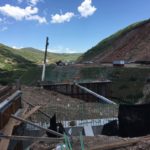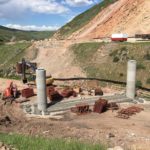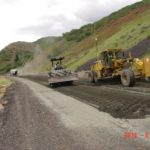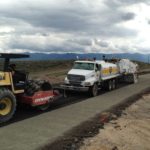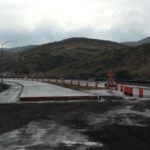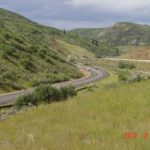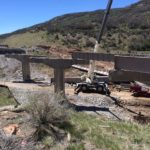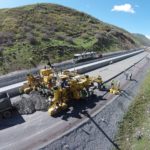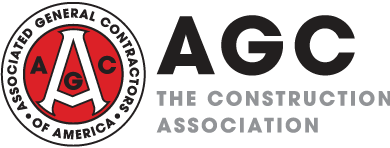- Company: Geneva Rock Products, Inc.
- Industry: Transportation
- Location: Park City, Utah
- Expected Completion Date: October 15, 2015
- Project Website
This project consisted of reconstructing a seven-mile portion of I-80, one of the nation’s most heavily traveled east-west routes. Crews replaced the existing asphalt with 4″ of cement treated asphalt base (CTAB) and 12 inches of concrete pavement from the U.S. 40 interchange to Wanship and reconstructed the westbound bridge over Silver Creek. We installed new fence, barrier, storm drains,and various road related items throughout the corridor.
This project will keep traffic moving through I-80 and the intermountain west. By providing a new concrete roadway through one of the harshest stretches of I-80 in Utah. The grade and climate in this location are constantly changing and a need for a durable and long lasting road is critical for the western United States. .
What impact does this project have on America?
Interstate 80 is one of the most critical highways to our nation’s infrastructure in the western United States. Long-haul truckers and the everyday driver driving the East-West corridor through Utah find themselves in one of the country’s most beautiful landscapes. This section of roadway was under extreme duress. It had been milled and repaved multiple times. This project was fast tracked and was put out to bid as fast as UDOT’s process could allow due to the condition of the existing roadway. This was a critical part to help keep “Renovate I-80” campaign moving. The fear was if this road started to fail before construction began this would mean huge delays for long haul truckers and the traveling public. This route is one of the most critical routes to goods and services in the intermountain west.
What interesting obstacles or unusual circumstances did you overcome to complete the project?
In an effort to “Keep Utah Moving” and impact the traveling public as little as possible, the project was done in two phases. During phase one in 2014, all traffic was shifted to the westbound lanes, allowing crews to work freely on the eastbound lanes. In 2015, all traffic was shifted to the newly reconstructed eastbound lanes to complete work on the westbound side. We worked hard to maintain traffic flow in a canyon with challenging topography and nearly 15,000 vehicles traveling through per day.
This was the first time in Utah where Cement-Treated Asphalt Base (CTAB) utilized 100 percent recycled asphalt from the existing roadway to provide a strong and stable base for the new concrete. This efficient use of existing resources provided a substantial savings in cost and time that would typically be spent hauling material on and off of the grade.
Additionally, the project used a wireless concrete paving system, which ran the paver on robotics. This eliminates the need for guide wires, which are used on traditional pavers. Project designers built 3D models of the pavement design, which were then loaded into the paver’s computer. The computer controlled the vertical and horizontal alignment of the machine, allowing for more precise shaping and smoother curves. It also provided greater accuracy in concrete thickness, with only two deficient thickness cores compared to eight for the eastbound direction that was controlled with wires. The process also eliminated the time required to set up and maintain the wires. The project team estimates a 10% to 15% savings in time.
A centripipe system was used, where they spin cast a special concrete blend to line the old failing pipes with a few layers of concrete converting the old CMP to essentially a RCP.
UDOT and Geneva Rock worked together efficiently and seamlessly in order to successfully provide a new, durable concrete roadway that will keep Utah (and the rest of the nation) moving for years to come.
What dangers and risks did you encounter, and describe any extraordinary methods used to keep workers safe?
To be able to construct the project all traffic was shifted to one side while construction was done on the other side. Concrete barrier was installed for the length of the project so that cars would not have the possibility of head on collisions. This traffic control set up allowed workers to safely build each side without interference from the traveling public. As a result, the project was faced with several access-related challenges that required close and consistent coordination between UDOT, GRP, local emergency response agencies, and area residents and businesses. Additionally, the project team was proactive in its public outreach and responsive to input from the community. The team made every effort to address public concerns and local government input as the roadway was built, and as a result, approximately two miles of new concrete roadway was opened weeks earlier than scheduled – a valuable benefit to not only UDOT and GRP, but to the local community and the traveling public.
As we were paving the fast lane shoulder on each side there was many locations that we encountered no track grade for our pavers. We had to use a zero clearance concrete paver to pave this safely. This type of paver allows for paving next to slope / cliffs or other tight objects.
How did you leverage new technologies to work faster and reduce waste?
For example, this was the first instance in Utah where Cement-Treated Asphalt Base (CTAB) which utilizes 100 percent recycled asphalt from the existing roadway to provide a strong and stable base for the new concrete. This efficient use of existing resources provided a substantial savings in cost and time that would typically be spent hauling material on and off of the grade.
Additionally, the project used a wireless concrete paving system, meaning the paver ran on robotics, eliminating the need for guide wires used on traditional pavers. Project designers built 3D models of the pavement design, which were then loaded into the paver’s computer. The computer then controlled the vertical and horizontal alignment of the machine, allowing for more precise shaping and smoother curves. It also provided greater accuracy in concrete thickness, with only two deficient thickness cores compared to eight for the eastbound direction that was controlled with wires. The process was also more time efficient because it eliminated the time required to set up and maintain the wires. The project team estimates a 10% to 15% savings in time.
